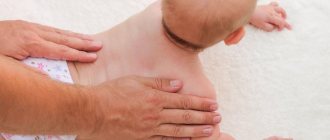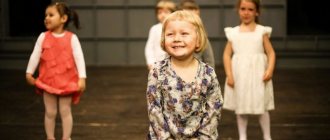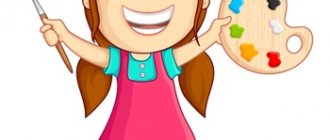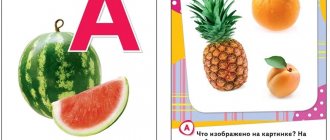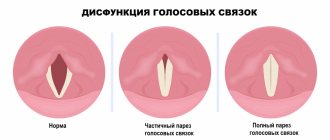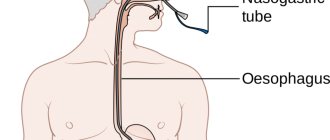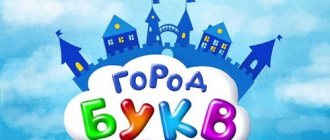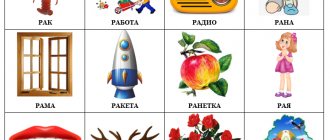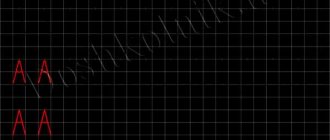Goals of speech therapy tongue massage
This procedure performs the following tasks.
- ✪ Stimulation of speech in case of delayed intellectual development of a child.
- ✪ Reducing increased salivation.
- ✪ Reducing the increased tone of the muscles that are involved in articulation.
- ✪ Activation of muscle tissue that has insufficient contractility.
- ✪ Improved kinesthetic sensations.
- ✪ Creation of suitable conditions for the development of voluntary movements of the articulation apparatus.
- ✪ Improving the elasticity of muscle fibers.
Speech therapy tongue massage for children is effective even with severe speech disorders. With its help, you can correct the pronunciation of sounds, improve sound clarity, and normalize the tone of the muscles responsible for the speech apparatus. Even if the patient has pronounced neurological symptoms, the use of competent massage can give good results.
What's the use of it
Massage is a therapeutic procedure, since by acting on certain points, it affects the functioning of certain body systems. Speech therapy massage is aimed at stimulating the organs involved in the articulation of sounds so that the speech therapist can correct the child’s sound pronunciation.
What is the benefit of this procedure for children with speech disorders?
- The muscle tone of the articulatory apparatus is normalized.
- The influence of paresis and paralysis on facial expressions and speech formation is reduced.
- It is possible to overcome or maximally correct hyperkinesia and synkinesia.
- Articulatory motor skills improve.
- All muscles of the speech apparatus take part in the creation of speech.
- It is possible to develop the ability to coordinate the movements of articulatory organs.
In addition to a narrowly targeted effect, logomassage also has a more extensive effect on the body. After all, during the procedure, nerve endings are activated, influencing the functioning of other body systems. The following effects are also observed:
- Blood circulation and lymphatic drainage improves.
- Muscle fibers become more elastic.
- Impact on biologically active points has a beneficial effect on the functioning of the whole organism, and not just the speech centers of the cerebral cortex.
Also, soft relaxing movements help the child calm down and tune in to relaxation, and more energetic techniques help to gain a boost of vigor. Due to its great benefits, speech therapy massage is an important part of correctional classes.
Conditions for speech therapy tongue massage
The doctor's office should be warm and comfortable enough. The specialist’s hands must be warm and immaculately clean, and his nails must be cut short. The optimal time for massage is two hours after eating. Before the procedure, the child’s mouth must be thoroughly cleaned.
The approximate number of sessions is 20. The exact number is determined by the speech therapist, depending on the severity of the speech defect. To achieve maximum effect, the procedure is carried out every day. The duration of the session varies from 5 to 25 minutes, depending on the severity of the disorder.
Before starting the session, it is important for the patient to take the correct and most comfortable position. Here are the most optimal positions for the procedure.
- ✪ The child lies on his back, a special cushion or small pillow is placed under his neck. In this case, the head should be fixed and slightly tilted back.
- ✪ There is another option - the child simply sits in a chair that has a high headrest (this is a great way for those children who feel nervous when asked to lie down on the couch).
- ✪ During speech therapy massage, small children can be in a stroller in a half-sitting position, while their head should also be slightly tilted back.
- ✪ If a child is very afraid of various medical procedures, you can sit him on the parent’s lap.
During the massage, the patient must be in a calm state; pain and discomfort are not allowed. If a small patient is not in the mood for the procedure, in the first session you can limit yourself to light massaging movements in the facial area. It is acceptable to conduct sessions in the presence of parents if the child feels more relaxed when loved ones are nearby.
Immediately after the procedure, it is recommended to provide the child with complete rest for 15-20 minutes, after which he can go home and go about his daily activities. It is worth noting that even with the help of the most professional massage you cannot achieve an instant effect: the first results can only be noticed after a few weeks.
Types of logomassage
There are both classic massage techniques and original developments. A popular author’s technique is probe massage, developed by E. V. Novikova. The specialist chooses which type of massage to use, based on the individual characteristics of the child:
- Manual or classic - it is done on or near the desired area. Includes stroking, pinching, tapping, and pressing. This type of logomassage can be done using a spatula, pacifier or toothbrush with soft bristles.
- Acupressure is a local type of massage, because a specialist acts on certain points that affect the functioning of speech centers.
- Hardware - it is carried out using devices that can create vibration or vacuum.
- Probe is an original technique developed by E. V. Novikova. To perform it, you need a special set of probes.
- Self-massage - a child can do it independently, after showing the necessary movements to adults. This also includes articulation exercises.
To make the procedure as safe as possible for the child, you need to take training courses or study professional literature (for example, for self-massage). Only then will you be able to do it correctly.
Actions for increased and decreased muscle tone
Speech therapy massage for low muscle tone begins with light massaging movements of the shoulder girdle. After this, the specialist touches those articulatory areas that are least active in the child. For example, movement disorders can occur when the chewing muscles or cheekbone muscles are underdeveloped. In this case, this area needs to be particularly actively affected.
The force of pressure should increase gradually, with each session, and the pressure, despite its intensity, should not cause pain in the patient.
For hypertension, a massage with a relaxing effect is prescribed. All movements are made in the direction from the periphery to the central part, and the pressure force should be small, otherwise the condition of the articulatory apparatus may deteriorate. The movements should be sliding and slightly pressing. Each movement should be repeated approximately 8 times. The pace of the massage is slow (it is the slow pace that reduces the degree of tissue excitability). Simultaneously with the impact on muscle tissue, the specialist asks the child to perform passive head movements. This means that the patient must slowly turn their head clockwise and then counterclockwise. Thanks to this technique, it is possible to relax the neck muscles, which helps reduce the increased tone of the tongue.
During various techniques, not only massage of the tongue muscles is performed. The doctor makes stroking movements (longitudinal and transverse) in the area of the forehead and bridge of the nose, presses on the hair growth area, and makes tapping movements in the area of the lip muscles to completely relax them.
Please note: some children are diagnosed with increased and decreased tone of various muscles. In this case, a differentiated massage is carried out: the specialist acts on some parts more actively, while others massage with relaxing movements. This approach requires high qualifications and a lot of practice.
Organizational aspects
Regardless of where the session will take place, you need to create the right conditions for it:
- The room should have a comfortable temperature.
- It needs to be ventilated before the massage.
- Prepare and disinfect all necessary devices (probes, spatulas, etc.).
- Prepare sterile disposable gloves.
- The child must take the correct body position: lying down with a cushion placed under the neck (shoulders raised, head tilted back), arms along the body, legs slightly bent (for convenience, you can also suggest placing a cushion). Or half-sitting in a reclining chair.
The environment in the room/office should promote relaxation so that the child feels comfortable during the session.
Contraindications to speech therapy massage
There are some restrictions to carrying out such a procedure. Thus, massage is not prescribed for the following conditions:
- ✪ ARVI and other viral infections;
- ✪ herpetic rashes on the face and lips;
- ✪ inflammatory eye diseases;
- ✪ inflammatory processes in the oral cavity;
- ✪ increased body temperature (in this case, the procedure is postponed until complete recovery).
Massage should be prescribed with caution to children who suffer from convulsive syndrome. If the child behaves restlessly during the procedure, shows fear and aggression, the massage should be stopped and try to calm the patient. For severe anxiety, mild sedatives may be prescribed.
Duration of classes
Speech therapy massage is carried out in courses that include at least 10 sessions, sometimes 15-20. Procedures are carried out daily with a gradual increase in time. They start with 2 minutes, and the maximum duration of the session is selected in accordance with the age of the child.
Children under 3 years of age receive logomassage for up to 10 minutes; at the age of 3 to 5 – up to 15 minutes, and with older preschoolers and schoolchildren – up to 20 minutes. If necessary, the course is repeated after 1.5-2 months.
Massage with teaspoons
This is a variant of play massage, authored by I. O. Krupenchuk. This massage is suitable for children who have negative reactions to probes. In this case, you can massage at different temperatures: cool for stimulation, warm for relaxation.
All manipulations with spoons are accompanied by poems and nursery rhymes. This allows the child to learn words denoting parts of the face and body, actions; master the skill of coordinating words in sentences and phrases. All actions are carried out along the main massage lines, using pressure, stroking, and rubbing.
Smooth teaspoons should be used to avoid hurting the baby. Children can do this massage on their own.
In what cases is it recommended?
The indicator for choosing the type of speech therapy massage is the state of facial and articulatory motor skills. First, the speech therapist looks at the muscles when they are in a relaxed state. For this, it is best for the child to be in a lying position.
If the muscles have normal muscle tone, they will be slightly tense, and the skin will be soft and elastic. All manipulations do not cause discomfort. If the tone is increased, there is greater tension, manipulations are carried out with difficulty; if it is low, the muscles are in a sluggish and flabby state. For the first option, you need to do a massage for relaxation, and for hypotension, a stimulating one.
Also, the indication for this procedure is the presence of paresis and paralysis. In this case, one corner of the lips may be higher than the other or the jaw may be shifted to the side. But the specialist begins to work from the most preserved areas. The affected areas must be treated carefully to minimize possible discomfort.
To determine the condition of the facial and articulatory muscles, examine:
- condition of facial muscles and skin;
- state of articulatory motor skills;
- condition of the soft palate;
- pronunciation side of speech.
Based on the diagnostic results, the speech therapist decides whether the child needs a course of speech therapy massage and what techniques he will use in his work.
Self-massage
Before self-massage, the child is shown all the basic techniques that will be used during the session. In the first lessons, the adult performs this procedure for the child himself, while verbalizing his actions. He then takes the child's hands and guides him.
Then the adult shows what needs to be done, and the child repeats after him. And when he masters the massage algorithm, he will be able to perform it, focusing only on the verbal instructions of an adult.
But if the child has a severe speech disorder, then it is better to do a probe massage. There are types of massage for children who have not only speech difficulties, but also other pathologies. For example, massage according to the method of A. F. Arkhipova, intended for children with cerebral palsy. It is aimed not only at improving articulatory and facial motor skills, but also takes into account the psychophysiological characteristics of such children.
Some believe that it is enough to undergo a course of speech therapy massage and the child’s sound pronunciation will immediately improve. No, logomassage usually acts as a complement to articulation and breathing exercises (in difficult cases it is the main focus). Having normalized muscle tone, you need to master new articulatory movements with your child. Only then will it be possible to correct the sound pronunciation and consolidate the result achieved by the massage.
Description of the author's massage technique by Novikova E.V.
This version of speech therapy massage is often used in classes with children with dysarthria and alalia. To conduct it, you need to complete special courses. The massage is performed using a probe set, which includes:
- “fork” probe - it is used for light tingling, oscillatory and rotational movements;
- figure-of-eight probe - needed for pressing movements;
- “sleigh” probes (there are 3 of them in the set) – also for pressing movements;
- “hatchet” probe – necessary for pressing and sliding actions;
- “push” probe - it is used to apply pressing movements for several seconds, after which the muscles of the tongue begin to relax.
Probe massage is contraindicated for children under 6 months.
The duration of the course is 2-3 weeks, each exercise is performed up to 30 times. It is recommended again after 2 months. But it happens that one course of this logomassage is enough for children. Parents and speech therapists need to carefully monitor the child’s reaction: there is a category of children who do not like the touch of metal instruments. In this case, it will be more effective and correct to use other massage devices.
